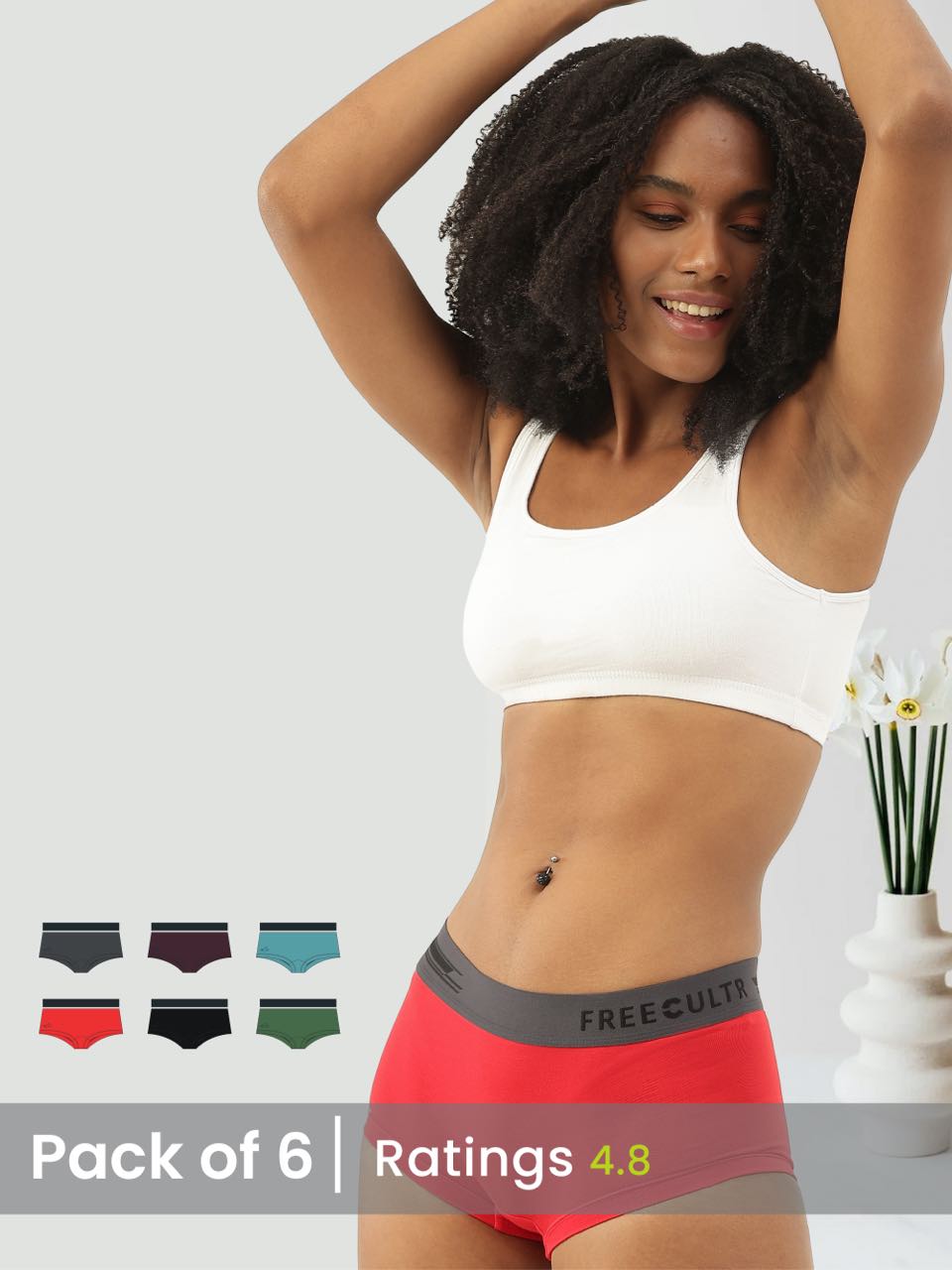Many people overlook the critical impact of properly sized underwear, often tolerating discomfort or poor support. Beyond mere annoyance, an ill-fitting pair, whether too tight or too loose, can lead to chafing, skin irritation. even hinder circulation, particularly with modern performance fabrics like moisture-wicking synthetics or breathable bamboo blends now commonplace. Achieving true comfort and optimal garment longevity hinges directly on precise measurements, a foundation that an accurate underwear size chart provides. This isn't just about aesthetics; it's about foundational well-being and ensuring your undergarments perform as intended, supporting your active lifestyle without compromise.

The Unsung Hero: Why Your Underwear Fit Matters More Than You Think
Hey there! Let's talk about something we all wear every single day but probably don't give enough thought to: our underwear. While it might seem like a small detail, the truth is, finding the right fit for your undies is a game-changer for your comfort, health. even your confidence. Think about it – your underwear is the first thing you put on in the morning and the last thing you take off at night. If it's not fitting right, that's hours of potential discomfort!
Wearing ill-fitting underwear isn't just a minor annoyance; it can lead to a whole host of issues:
- Chafing and Irritation: Too tight or too loose. you're looking at friction burns, redness. general discomfort, especially if you're active.
- Poor Circulation: Underwear that digs into your skin, particularly around the waist or thighs, can restrict blood flow. Not good for anyone!
- Hygiene Hassles: If your underwear isn't breathable or is constantly bunching up, it can create a moist environment, which unfortunately, is a breeding ground for yeast infections or bacterial growth.
- Visible Lines and Bumps: Ever notice those awkward lines under your clothes? That's often a sign of underwear that's too small or the wrong style for your outfit.
- Lack of Support or Too Much Restriction: For men, proper support is key. For women, comfort and preventing wedgies are paramount. The wrong fit compromises both.
So, how do we solve this common problem? By understanding the magical tool that is the underwear size chart. It's your secret weapon for unlocking ultimate comfort.
Cracking the Code: How to Use an Underwear Size Chart Like a Pro
Before you even look at an underwear size chart, you need to know your own measurements. Don't just guess or assume your size based on what you wear in jeans. Underwear sizing can be surprisingly different!
Here's what you'll need and how to do it:
- A flexible tape measure: The kind tailors use, not a retractable metal one.
- No clothes (or minimal, thin clothing): For the most accurate measurements.
- Stand relaxed: Don't suck in or push out. Be natural.
Getting Your Measurements:
-
Waist Measurement:
- Find your natural waistline. This is usually the narrowest part of your torso, just above your belly button.
- Wrap the tape measure snugly but not tightly around your waist. Make sure it's level all the way around.
- Note the measurement in inches or centimeters.
-
Hip Measurement:
- This is often the most crucial measurement for underwear.
- Stand with your feet together.
- Wrap the tape measure around the fullest part of your hips and buttocks. This is typically about 7-9 inches below your natural waist.
- Again, ensure the tape is level all the way around and not pulled too tight.
- Jot down this number.
-
Thigh Measurement (Less Common. Useful for Some Styles):
- For boxer briefs or boy shorts, some brands might include a thigh measurement.
- Measure around the fullest part of your upper thigh.
Once you have these numbers, you're ready to consult the brand's specific underwear size chart. Remember, a size "Medium" from Brand A might be totally different from a "Medium" from Brand B!
Decoding Gender-Specific Sizing: It's Not One Size Fits All
While the basic principles of measuring your waist and hips apply to everyone, there are nuances in how different brands and genders approach their underwear size chart.
For Women:
Women's underwear sizing often focuses heavily on hip measurements, as this is where most of the fabric needs to accommodate. Waist measurements are also vital, especially for high-waisted styles. It's common to see sizes like XS, S, M, L, XL, etc. , which correspond to a range of hip and waist measurements.
Here's a simplified example of what a typical women's generic underwear size chart might look like (always check the specific brand!) :
| Size | US Dress Size | Waist (inches) | Hips (inches) |
|---|---|---|---|
| XS | 0-2 | 24-25 | 34-35 |
| S | 4-6 | 26-27 | 36-37 |
| M | 8-10 | 28-29 | 38-39 |
| L | 12-14 | 30-32 | 40-42 |
| XL | 16-18 | 33-35 | 43-45 |
Different styles (bikini, thong, brief, boy short, high-waist) might also subtly affect how a size feels. For instance, a thong in your size might feel less restrictive than a full brief, even if both technically fit your measurements, simply because there's less fabric.
For Men:
Men's underwear sizing primarily revolves around waist measurements, often correlating directly with pant size. But, hip measurements are still relevant for styles like boxer briefs or trunks that extend down the thigh. Support is also a key consideration for men. the right size ensures the pouch provides adequate, comfortable support without compression.
Here's a rough example of a men's generic underwear size chart:
| Size | Waist (inches) | Pant Size (approx.) |
|---|---|---|
| S | 28-30 | 28-30 |
| M | 32-34 | 31-33 |
| L | 36-38 | 34-36 |
| XL | 40-42 | 37-39 |
| XXL | 44-46 | 40-42 |
Boxers generally offer a looser fit and less support, while boxer briefs and briefs are designed for more snugness and support. The "rise" (how high it sits on your waist) can also influence comfort.
Beyond the Numbers: Other Factors for Your Perfect Fit
While the underwear size chart is your starting point, it's not the only piece of the puzzle. Several other elements play a crucial role in how comfortable your underwear truly feels:
-
Fabric Type:
- Cotton: Breathable, soft, absorbent. Great for everyday wear. Less stretch than synthetics.
- Modal/Bamboo: Silky soft, highly breathable, good moisture-wicking properties. often very stretchy. Luxuriously comfortable.
- Synthetics (Nylon, Spandex, Polyester): Offer excellent stretch, moisture-wicking. durability. Often used for athletic wear. Can sometimes feel less breathable if not well-engineered.
- Lace/Silk: More for aesthetics, often less practical for everyday comfort or activity.
A highly stretchy fabric might be more forgiving if you're slightly between sizes, while a less stretchy fabric (like 100% cotton) will require a more precise fit.
-
Underwear Style:
The cut of the underwear significantly impacts feel. A thong, for example, will always feel different from a full brief, even if both are technically the "right" size according to the underwear size chart. Consider your daily activities and clothing choices when picking a style.
-
Brand Variation:
This is a big one! Just like jeans, shoe sizes, or t-shirts, underwear sizes are not standardized across all brands. A "Large" from one brand might be closer to a "Medium" or "XL" from another. This is why always checking the specific brand's underwear size chart is paramount. Don't just assume!
-
Personal Preference:
Some people prefer a snugger fit for support, while others like a looser, more relaxed feel. Even if the measurements suggest a certain size, if it doesn't feel right to you, it's not the perfect fit. Your comfort is the ultimate judge.
-
Body Shape:
Our bodies are unique! Someone with wider hips and a smaller waist might find certain styles or cuts more comfortable than someone with a straighter figure, even if their hip measurements are similar. Experiment to see what works best for your unique shape.
Troubleshooting: What to Do When the Fit Isn't Quite Right
Even with the best intentions and a detailed understanding of the underwear size chart, sometimes you'll try on a pair and it just doesn't feel right. Here’s how to identify common fit issues and what they mean:
| Issue | Symptoms | Probable Cause | Actionable Advice |
|---|---|---|---|
| Too Tight | Red marks on skin, digging in (waistband, leg openings), restricted movement, feeling compressed, "muffin top" effect, discomfort, chafing. | Size is too small, or style is too restrictive for your body shape/preference. | Try sizing up. Consider a different style with more coverage or a less constricting waistband/leg opening. Look for stretchier fabrics. |
| Too Loose | Bunching, sagging, slipping down, lack of support, fabric gathering excessively, visible lumps under clothes. | Size is too large, or fabric/style lacks elasticity/structure. | Try sizing down. Look for styles with a firmer waistband or more structured fabric. Ensure your measurements match the brand's underwear size chart. |
| Wedgies | Fabric constantly riding up between buttocks. | Often due to underwear being too small (not enough fabric to cover) or the wrong cut for your body/activity level. | Size up, or try a different style (e. g. , full brief instead of bikini, or a thong if you prefer less fabric). Ensure leg openings aren't too tight. |
| Waistband Rolling | Waistband folds or rolls down, especially when sitting. | Underwear is too tight at the waist, or the waistband itself isn't structured enough. | Size up, or choose styles with a wider, more rigid waistband. |
If you find yourself between sizes on an underwear size chart, it's often a good idea to go with the larger size, especially for everyday comfort, unless you know the brand runs large or you prefer a very snug fit. Remember, you can always try on new underwear over your existing pair (for hygiene!) to get a feel for the fit before committing.
Your Action Plan for Underwear Nirvana
Okay, so we've covered a lot! Here are your key takeaways to ensure you're always rocking the perfect fit:
- Measure Yourself Regularly: Our bodies change! Re-measure your waist and hips every 6-12 months. It only takes a minute.
- Always Consult the Brand's Underwear Size Chart: This cannot be stressed enough. Never assume your size. Every brand is different. Find their specific chart on their website or product page.
- Consider Fabric and Style: Think about what you're doing. Are you working out? Lounging? Going to a formal event? Different fabrics and styles lend themselves to different situations.
- Don't Be Afraid to Experiment: It might take a few tries to find the brands and styles that truly fit your unique body and preferences. It's a journey, not a destination!
- Prioritize Comfort: , if it doesn't feel good, it's not the right fit for you. Trust your gut (and your bum!) .
- Invest in Quality: Well-made underwear, often from better fabrics, will hold its shape and fit better for longer. It's worth a little extra for long-term comfort.
By taking a few extra minutes to comprehend your measurements and consult that crucial underwear size chart, you'll be well on your way to a more comfortable, confident you. Your body will thank you!
Conclusion
Finding your perfect underwear fit isn't merely about numerical measurements; it's a commitment to your daily comfort and overall well-being. Remember, sizing isn't static; our bodies evolve. I've personally found that re-measuring every few months, especially considering recent fabric innovations like adaptive stretch blends, ensures I stay comfortable, whether I'm opting for sleek boy shorts or supportive briefs. This proactive approach prevents the common discomfort of pinching or riding up, which can genuinely impact your mood and productivity throughout the day. Consider it an investment in foundational comfort, much like choosing the right ergonomic footwear. Ultimately, don't underestimate the power of a well-fitting pair of underwear to boost your confidence from the inside out. Embrace the journey to your ideal fit; you deserve that uninterrupted comfort.More Articles
Women's Boy Shorts – Seamless Comfort & Confident CoverageMen's Briefs – Enhanced Durability & Secure Fit
Inner Wear – Moisture-Wicking & Temperature Regulation
Inner Wear – Seamless Feel & Foundational Comfort
Boxers for Women – Relaxed Comfort & Unrestricted Movement
FAQs
Why bother with an underwear size chart anyway?
Using a size chart is key to finding undies that actually fit! It helps prevent uncomfortable pinching, sagging, or chafing, ensuring you get that perfect snug-but-not-tight feel and maximum comfort all day long.
How do I measure myself correctly for underwear?
You'll typically need two main measurements: your waist and your hips. For your waist, measure around the narrowest part of your torso. For your hips, measure around the fullest part of your glutes, keeping the tape measure level. Make sure the tape isn't too tight or too loose!
What if my measurements fall between two sizes on the chart?
If you're in between, it often depends on your personal preference and the fabric. For a looser, more relaxed fit, you might want to size up. For a snugger, more supportive feel, sizing down could work, especially with stretchy materials. When in doubt, sizing up is usually safer for comfort.
Are underwear sizes the same across different brands?
Nope, not usually! Just like with jeans or shirts, underwear sizes can vary quite a bit from one brand to another. That's why it's super vital to check the specific size chart for each brand you're buying from, rather than just assuming your usual size will fit.
Can my underwear size change over time?
Absolutely! Our bodies are constantly changing due to things like weight fluctuations, muscle gain or loss, or even just natural aging. It's a good idea to remeasure yourself every now and then, especially if your current undies aren't feeling as comfortable as they used to.
What are some common mistakes people make when using a size chart?
A big one is not measuring accurately – either guessing or pulling the tape too tight/loose. Another mistake is ignoring the brand's specific chart and just picking their usual size. Also, not considering the material (e. g. , stretchy vs. rigid cotton) when picking a size can lead to discomfort.
How does finding the right size really impact comfort?
It makes a huge difference! The right size means no uncomfortable digging into your skin, no constant tugging to pull them up. no awkward bunching. It allows the underwear to move with your body, providing the intended support and coverage without you even noticing them, which is the ultimate comfort goal.






